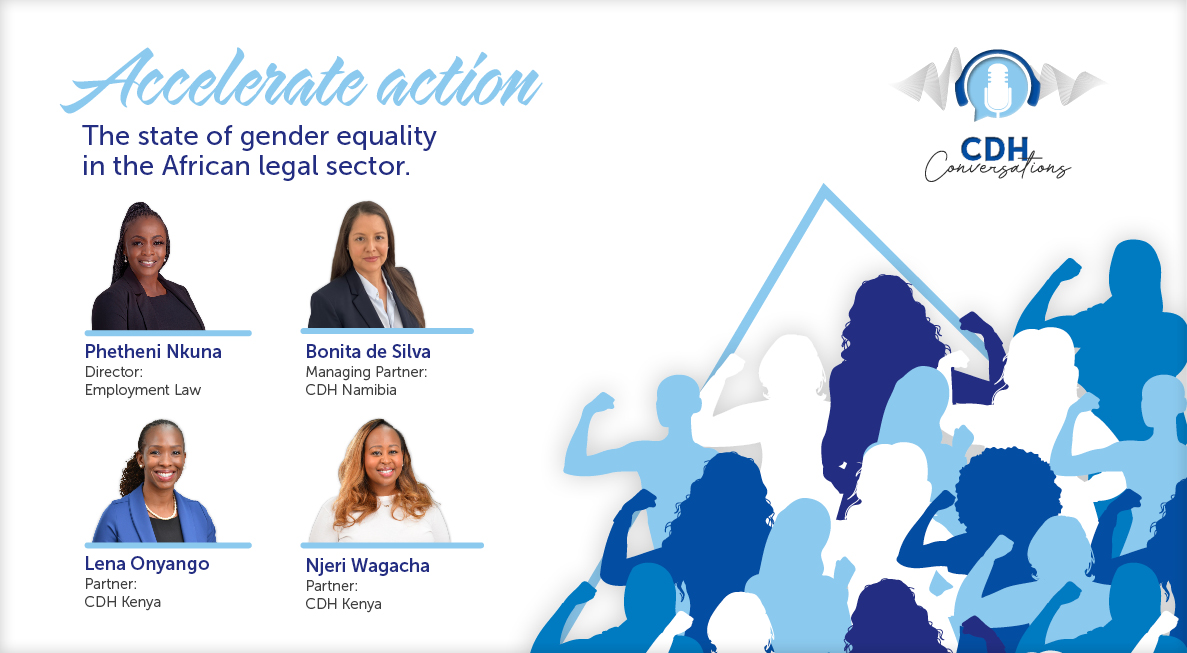No more delays, carbon tax in South Africa is a burning reality
The reason for the implementation of carbon tax is twofold:
- It enables South Africa to meet its nationally-determined contribution commitments as required by the 2015 Paris Agreement on climate change (Paris Agreement) which comes into operation in 2020, and aims to collectively address the threat of climate change within the context of sustainable development and includes efforts to eradicate poverty.
- It aims to address the issues regarding “greenhouse gas (GHG) emissions” and intends to reduce South Africa’s GHG emissions in line with the National Climate Change Response Policy and Development Plan.
The date to provide written comments on the Second Draft Carbon Tax Bill 2017 (Bill) published in December 2017 is fast approaching, and interested stakeholders only have until 9 March 2018 to submit comments.
Following the publication of the aforesaid Bill and Explanatory Memorandum in respect of the Bill (Explanatory Memorandum), according to a Media Statement issued by National Treasury on 14 December 2017 (Media Statement), it is anticipated that the Bill will be formally tabled in Parliament during mid-2018, alternatively at the 2019 National Budget, depending on the state of the economy. The Media Statement also indicates that tax incentives and revenue recycling measures to minimise the impact of the first phase of the policy will be included with the announcement of the implementation of carbon tax.
In terms of the Paris Agreement, South Africa’s GHG emissions are said to firstly peak from the period 2020 until 2025, then plateau from the period 2025 until 2035, whereafter GHG emissions are said to decline from 2036. The introduction of carbon tax will also take place in a phased manner, which allows for developmental challenges faced by South Africa, encourages investment in more energy efficient technology, and ensures that South Africa’s competitiveness is not being compromised.
National Treasury noted in the Explanatory Memorandum that the impact of the first phase has been designed to be revenue-neutral, and revenues will be recycled by way of reducing the current electricity generation levy, credit rebate for the renewable energy premium, as well as a tax incentive for energy efficiency savings.
Since concepts such as “carbon tax” and “GHG emissions” are relatively new concepts within the South African context in comparison to other jurisdictions around the world, South African taxpayers are yet to fully understand the impact that the implementation of carbon taxes will have on their business operations from a financial and compliance perspective.
The rate of tax
Section 5 of the Bill proposes that the rate of carbon tax will be R120 per ton of carbon dioxide (CO2e) above the tax-free allowances, with an annual increase of the consumer price inflation plus 2% until 31 December 2022. Following 31 December 2022, the rate of the increase is required to be made in line with inflation as determined by Statistics South Africa going forward.
Tax-free allowances
Sections 7 to 13 of the Bill allows for the following tax-free allowances which were extensively considered following the publication of the First Draft Carbon Tax Bill 2015 (First Bill), and commented upon in the 2015 First Bill Response Document:
- basic allowance for fuel combustible emissions of 60%;
- allowance for industrial process emissions of 10%;
- allowance in respect of fugitive emissions of 10%;
- trade exposure allowance of up to a maximum of 10%;
- performance allowance not exceeding 5% of the total GHG emissions of the taxpayer;
- carbon budget allowance of 5% for companies who have a carbon budget, which means a limit on total GHG emissions from a specific company, within a specific period of time; and
- carbon offset allowance of either 5% or 10%.
A taxpayer is only entitled to receive the sum of the allowances mentioned above in respect of a tax period to the extent that the sum of the allowances does not exceed 95% of the total GHG emissions.
Taking into account the tax-free thresholds, this would imply that an initial effective carbon tax rate will be as low as R6 to R48 per ton CO2e.
Calculation of the carbon tax liability
A taxpayer’s carbon tax liability is calculated by reducing the tax base by the tax-free allowances noted in s7 to s13, and then multiplying that amount by the rate of carbon tax. A comprehensive formula has been provided for in the Bill for purposes of working out the tax base, which differs dependant on the specific fuel types used in the different industries.
Tax period
A taxpayer will be required to pay carbon tax every tax period. The Bill suggests that carbon tax must be treated as an environmental levy in terms of s54A of the Customs and Excise Act, No 91 of 1964, and biannual environmental levy accounts and payments must be submitted for every tax period commencing on 1 January and ending on 30 June, as well as the period commencing 1 July and ending on 31 December.
With regards to the carbon offset allowance referred to above, the manner in which carbon offsets can be utilised is prescribed by the Minister of Finance (Minister) and is available for “approved projects” such as a Clean Development Mechanism project, a Gold Standard project or a project that complies with another standard approved by the Minister of Energy or a delegated authority. Carbon offsets have been extensively dealt with by National Treasury with the release of the Draft Offsets Regulations (Draft Regulations), and Explanatory Note on 20 June 2016.
The Draft Regulations have not yet been amended in order to align the provision with the current Bill. however, we can expect that this aspect will be addressed by National Treasury in due course.
From a compliance perspective, the South African Revenue Service (SARS) will be tasked with the administrative authority in respect of the implementation of carbon tax liability assessments, and will be granted access to the Department of Environmental Affairs’ emissions database, such as the South African National Atmospheric Emissions Inventory System (NAEIS). The NAEIS is an online national reporting platform that will hold both air pollutants and GHG emissions inventories of South Africa, and offers an innovative way for groups of emission sources and corresponding data providers, as defined in the National Atmospheric Emission Reporting Regulations, to report emissions as required by the National Environmental Management: Air Quality Act, No 39 of 2004 (NEMAQA), and forms part of the South African Atmospheric Emission Licensing and Inventory Portal.
Since SARS will have access to the aforesaid portals and systems, this places further pressure on industries to ensure strict compliance with the emission limits in respect of the specific listed activities contained in the NEMAQA, as well as their atmospheric emission licence requirements, where applicable.
With the announcement of the 2018 Budget approaching, we can expect the Minister to provide further insights as to the state of the economy which ultimately influences the date on which the Bill will come into effect.
The information and material published on this website is provided for general purposes only and does not constitute legal advice. We make every effort to ensure that the content is updated regularly and to offer the most current and accurate information. Please consult one of our lawyers on any specific legal problem or matter. We accept no responsibility for any loss or damage, whether direct or consequential, which may arise from reliance on the information contained in these pages. Please refer to our full terms and conditions. Copyright © 2026 Cliffe Dekker Hofmeyr. All rights reserved. For permission to reproduce an article or publication, please contact us cliffedekkerhofmeyr@cdhlegal.com.
Subscribe
We support our clients’ strategic and operational needs by offering innovative, integrated and high quality thought leadership. To stay up to date on the latest legal developments that may potentially impact your business, subscribe to our alerts, seminar and webinar invitations.
Subscribe



